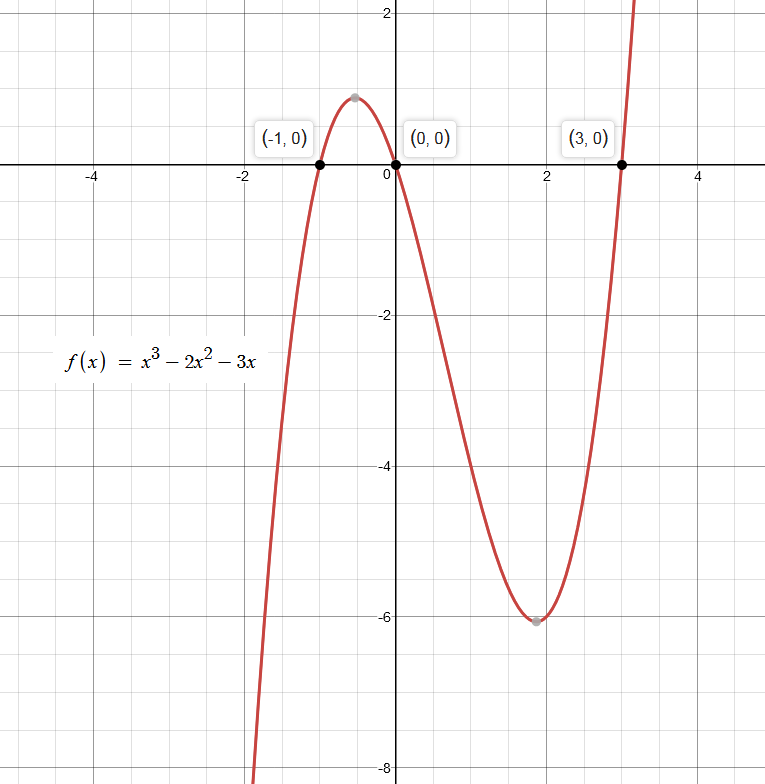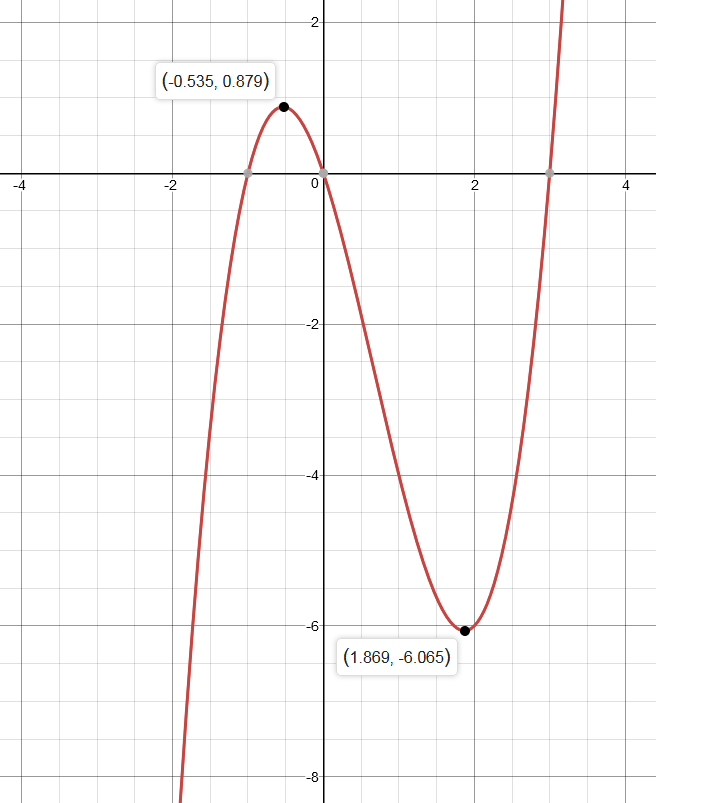Question #ba71a
1 Answer
Rolle's Theorem is satisfied as there are two points at
where
Explanation:
Rolle's Theorem states that under certain conditions an extreme value is guaranteed to lie in the interior of the closed interval.
Rolle's Theorem
Conditions:
-
The function
#color(blue)(f(x)# must be continuous on the closed interval [a, b]. -
The function f(x) must be differentiable on the open interval (a, b).
-
f(a) = f(b)
If these three conditions are satisfied then there is at least one number in the open interval (a, b) such that the derivative of f(x) is zero.
Given:
Observe that
We will now find the x-intercepts of
and show that
We have
We can write this expression as
Hence the solutions to our Cubic Function are
Please refer to the image of the graph below that visually presents our findings.

Next
we will differentiate
We will find
Next
we will set
i.e.,
This is a quadratic equation
General Form of a quadratic equation is
Consider our quadratic equation
Note that
We will use the following quadratic formula to simplify:
Hence our roots are
Rolle's Theorem is satisfied as there are two points at
where
Please refer to the image of the graph below that visually presents our findings.


